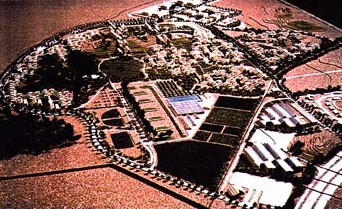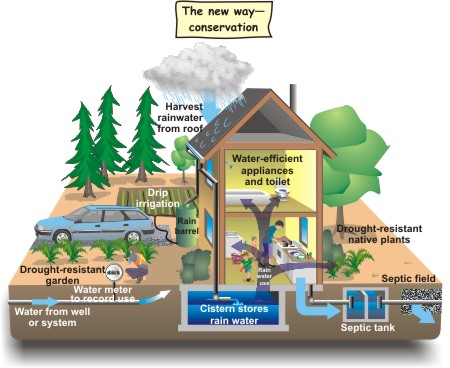1970 "The year of the Environment"
"Toward a land ethic: the lessons of defeat."
a reality of the problem | inadequate solutions | ways out | sources
"The defeat of the movement in Washington, the movement to institutionalize a land ethic lost momentum."
248.

Solar design for a entire city in Novato, Marin County, California.
"– but the push for comprehensive land-use programs hit a wall."
248.
"In 1973, the economy began to slump, and then the oil embargo led to a dramatic increase in energy prices."
1972 2.4
million housing
starts
1974 1.0
million housing
starts
; collapse of the real-estate, housing boom
"a backlash against the environmental movement's early triumphs."
p. 248.
far-reaching effects of "air and water pollution laws."
"...the reform effort of the
early 1970s also suffered from a kind of immaturity. The supporters of land-use
legislation underestimated the complexity of the task."
249.
"...the most difficult battles in the ant-pollution campaign involved the prerogatives of corporate management. Yet the rights of management were not nearly so sacred as the rights of property."
"...property rights became a powerful rallying cry the opponents of environmentalism in the decades to come,"
p. 249.
"the pollution problem, the solution...largely a matter of technology."
p. 250.
"...the urban landscape was not manufactured in a controlled environment designed by engineers. Instead, the pattern of urban growth was the result of countless decisions made by a variety of people, and builders were only one part of the equation."
pp. 250-251.
"The cost of solving the two problems was also different."
"consumers ultimately paid more for utilities and for countless products, increases seldom where overwhelming"
p. 251.
"Would land-use regulation reverse the postwar trend toward rising rates of homeownership?
251.
"The land-use ideal was much harder to define than 'clean air' or 'clean water.' Scientists could measure pollution with some precision. Even where the air of the water was polluted, people sometimes could remember a time when the skies were blue or the streams were clear. But what was good land-use?"
252
The task of envisioning good land use was made more difficult by the long-standing environmentalist habit of setting nature apart from the city."
"What would environmentally sound development look like? Though Ian McHarg made a start" ... Design with Nature, few environmentalists followed McHarg's lead...."
252.
"Aldo Leopold argued that a land ethic required a deeply felt obligation to something larger than society
pp. 252-253.
"Though a real advance over the idea that land was a limitless bounty for individuals to exploit, the call to acknowledge the ecological value of land ultimately played on fear." not the needed "hard-won change in popular 'loyalties, affections, and convictions',"
253.
"Woodlands, Texas" "environmental design for the new suburb:"
The concept of ecological integrity sustains the ideal of a well planned community preserving open space and protecting water-courses.
"Though most of the land had poorly drained soil, the soil in a few wooded locations allowed water to seep below and replenish two important aquifers."
multiple uses for unused terrains?
1) "The creek banks, the flood plains, and the well-drained land would provide recreational open space for the community.
2) "Because the open space formed a rich wildlife corridor, the development could continue to support white-tailed deer, opossum, armadillos and even bob-cats."
p. 260.
"Woodlands, Texas" was to be 250,000 homes by 13 developers for 750,000 residents
"Eventually all but one of the communities...defaulted." In 1982, the Reagan administration decided to eliminate the program and it was killed in 1984."
"the hopes of the new community proponents were never fulfilled." "...face formidable financial obstacles...."
"Often the developer had to pay for facilities ordinarily provided by local governments."
Bulldozer in the Countryside, Adam Rome; 2001.




